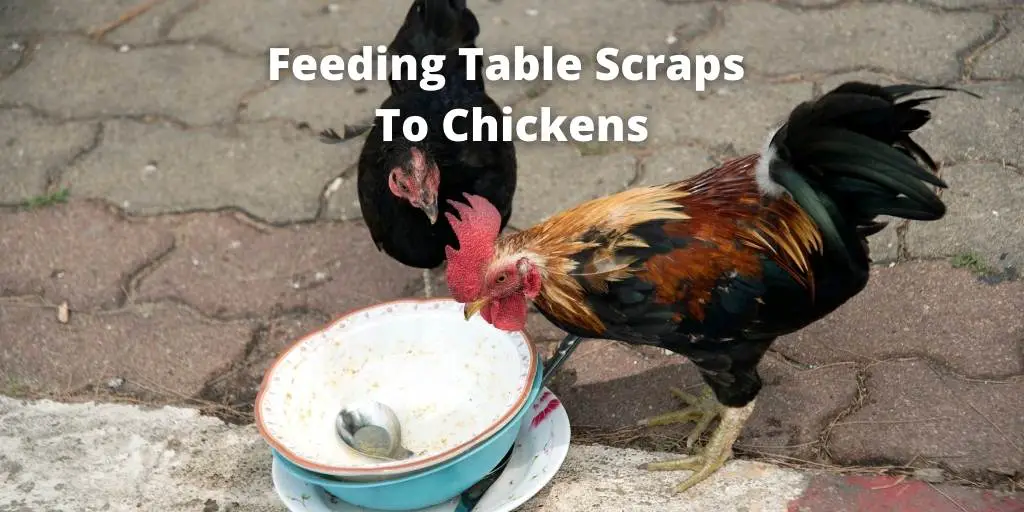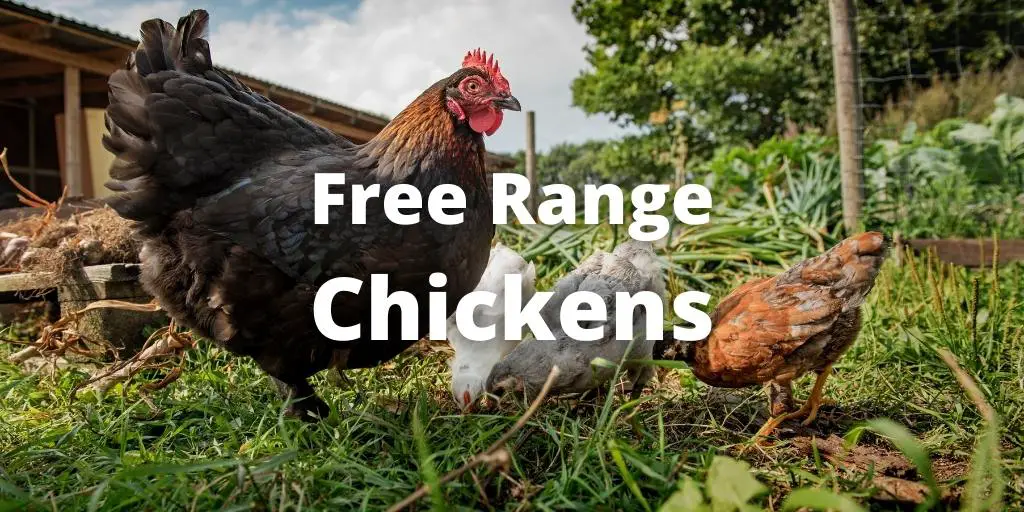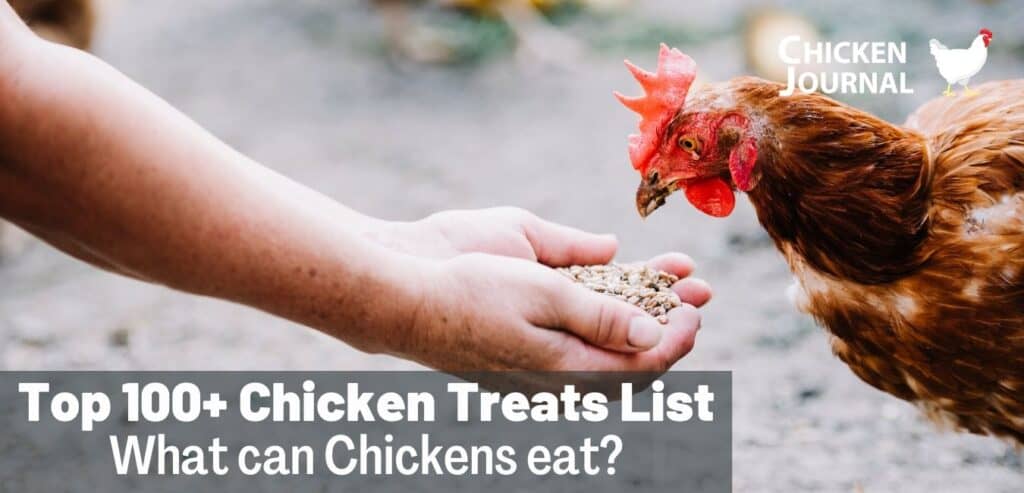Poultry farmers traditionally feed table scrap to chickens. Do you want to give leftover food to your chickens?
However, feeding chickens leftover food requires specific precautions.
Food scraps decrease waste, save money on feed, and provide birds with a varied diet that simulates their foraging instincts.
Chickens enjoy eating fruit and vegetable peels, bread crusts, and spaghetti leftovers.
Can birds consume all scraps?
Are there any limits or warnings for feeding table scraps to chickens?
In this guide, you will know which table and kitchen scraps are good for backyard chickens and which should be avoided.
Should you feed chicks leftovers or wait until they’re old?
Can hens eat leftovers daily, or is there a limit?
In this informative guide, you will also understand the practical tips on feeding birds leftovers.
This thorough guide on feeding food scraps to chickens will cover everything, regardless of your poultry experience.
Not only this, we will also discuss the pros and cons of feeding table scraps to chickens.
Moreover, read our detailed article on: What can chicken eat?
What is Food Scrap for Chickens?
Food scraps are the tiny parts of meals left over.
Chickens can eat whatever humans can, therefore giving table scraps requires caution because not all foods are good for chicken’s health.
Use these scraps to feed your flock instead of throwing them away.
Chickens are omnivores and can eat fruits, vegetables, grains, and meat leftovers.
Giving chickens scrap food reduces waste and gives them a range of nutritious meals and foraging habits.
Knowing the difference between feed and scrap is important for a broader perspective.
Protein, cereal grains, cereal byproducts, feed additives, fats, and oils, minerals, and vitamins make up feed, which can be commercial or homemade.
Can Chicken Eat Table Scrap?
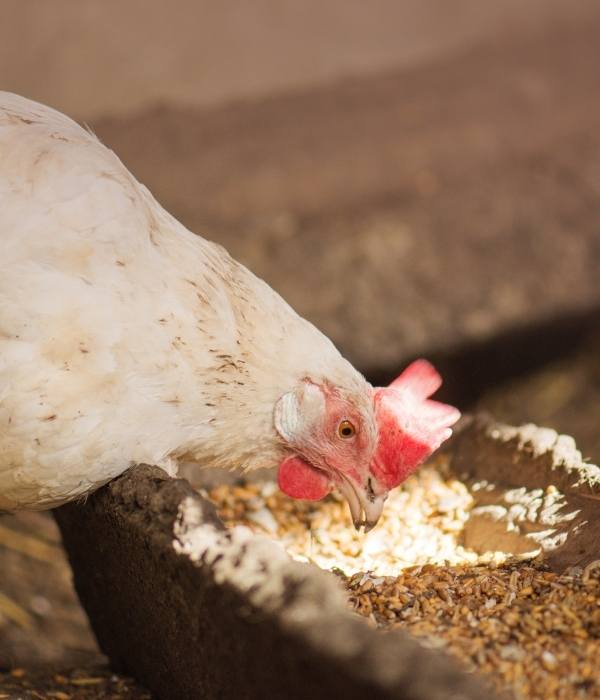
The answer is yes; chickens can eat leftovers or table scraps. They will gladly eat your table scraps if you give them a chance.
You can feed chickens various leftovers from the dining table, including vegetable peels, bread crusts, grains, pasta, and fruit.
Before giving them to flocks, checking the scraps for dangerous components or seasonings like salt or spices is essential.
Chickens can benefit from eating scraps from the table, but only if given in small amounts regularly. This will help keep your flock healthy and prevent intestinal problems.
The following table scraps are just okay or perfect for your chickens as a supplement –
- Kinds of seafood like fish, lobster, and shellfish
- Beans and Peas
- Cauliflowers
- Fruits like Plums, Peaches, and Cherries
- Unbuttered and Unsalted Popcorns
- Seeds like Sunflower, Chia, Flax, and Hemp
- Spinach
- Turnips
- Cabbage
- Whole-grain slices of bread
- Fewer sugar crackles or cereals
- Oats
- Cooked Rice
- Pasta Cooked
- Cooked eggs
- Bell Peppers
- Cayenne Peppers
- Hamberger
- Brussels sprout
Health Benefits of Feeding Table Scraps To Chickens
Feeding table scraps to chickens has several benefits. These are some benefits:
1. Nutritional Supplement: Table scraps or food scraps can supplement your chicken diet with nutrients. This promotes flock health and well-being.
2. Waste Reduction: Feeding leftover food to chickens to reduce kitchen waste. You may feed your flock leftovers instead of dumping them away.
3. Cost Savings: Feeding table scraps to chickens reduces feed prices. Small-scale chicken growers and home flock owners may benefit.
4. Environmental Sustainability: Feeding hens food scraps reduces organic waste in the landfill. It promotes eco-friendly household garbage management.
5. Better Egg Quality: Food scrap-fed chickens may lay eggs with better yolks and taste. Egg nutrition can improve because of their varied diets.
6. Bring Out Their Natural Foraging Behavior: Chickens are natural foragers, so offer them leftovers. It reduces stress and engages them, improving their health.
7. Less Feed Dependency: Feeding chickens food scraps reduces their need for commercial feed. This is useful when you have feed storage or wish to minimize store-bought feed.
You can decide whether to feed your hens table scraps after reading the advantages. Follow chicken-safe food scrap rules.
Also read: All about chicken scratch
When Can Chickens Start Eating Food Scraps?
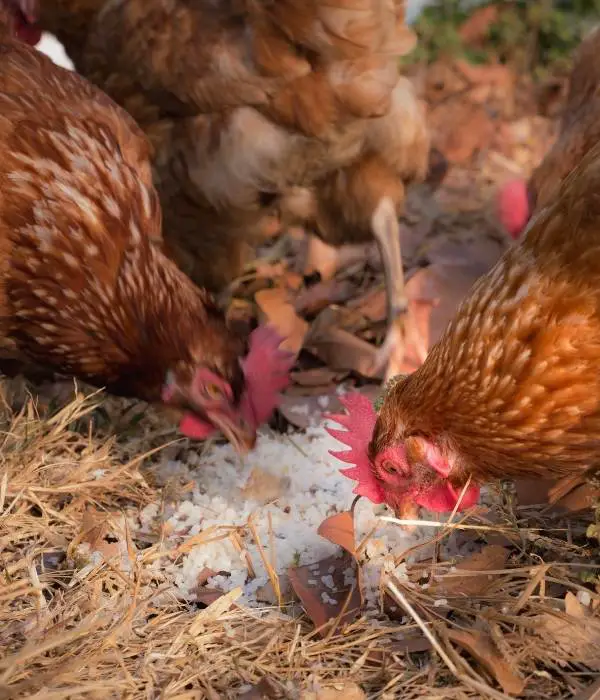
Chickens can eat scraps when they’re old enough. They usually start eating leftovers at 8–12 weeks.
They require a balanced chicken starter feed to grow and develop before this age.
After the chickens became adults, slowly feed them leftover food. Bread, fruit, and veggie peels are good starters.
Avoid giving them rotten or moldy leftovers, which might hurt them.
Chickens may consume scraps as they grow. Vegetables, grains, pasta, and meat-type table scrap are best for chickens.
However, salt, sugar, and spice might hurt them, so avoid giving them too much.
When feeding table scraps to chickens, remember they need their regular meal.
Most of their food should come from their regular meal, with leftovers making up only a small portion.
Also read: Mealworms for chickens
What Kitchen Scraps Can Chickens Eat?
When giving your chickens scraps from the kitchen, it’s essential to know which ones are safe and suitable for them and which ones you should stay away from.
Here’s a list of what you can feed your chickens from your kitchen scraps:
1. Excellent kitchen scraps for chickens:
Fruit and Vegetable Scraps:
Give chickens apple cores, carrot peels, and lettuce leaves—they love them. Be cautious while removing moldy or destroyed parts.
Grains and Bread: Chickens prefer grains and bread, but give them little. Treat them to old bread, cooked rice, or noodles.
Dairy Products: Plain yogurt or cheese provides calcium and protein in small amounts.
Berries: Other excellent kitchen leftovers include berries such as blueberries, blackberries, cranberries, cherries, elderberries, strawberries, and raspberries.
Root vegetables: Sweet potatoes, radishes, beets, carrots.
Sprouts: Small greens and sprouts.
Fruits: Grapes, Honeydew Melon, Pomegranate, Apples, Papaya, Peaches, Cantaloupe, Mangoes, Pears.
Greens: Greens include spinach, collards, bok-choy, and lettuce.
Squashes: Squashes like cucumber, zucchini, summer, and pumpkin.
2. Good kitchen scraps for chickens:
Meat and fish scraps: You can feed your chickens freshly prepared meat or fish leftovers, but not as their main feed. Don’t feed them cooked or spoiled meat.
Eggshells: Crushed eggshells provide calcium to chickens. Before offering, wash, bake, and crush them to get rid of pathogenic organisms.
Other useful kitchen scraps:
- Fish, lobster, and shellfish
- Beans, Peas
- Cauliflowers
- Cherries, Plums, and Peaches
- Popcorn without butter or salt
- Seeds like sunflower, chia, flax, and hemp
- Spinach
- Turnips
- Cabbage
- Whole-grain bread slices
- Not as many sugar crackles or cereals
- Oats
- Cooked rice
- Pasta
- Cooked eggs
- Bell Peppers
- Cayenne Peppers
- Hamberger Brussel Sprouts
3. Unhealthy kitchen scraps for chickens:
Anything that has become bad or is moldy: Chickens can get sick from moldy food, so always give them fresh, clean scraps.
Salty and sweet foods: Chickens have different dietary needs than people, so don’t give them chips, cookies, or other prepared snacks that are salty or sweet.
Citrus fruits: Most citrus fruits can cause digestive issues for chickens, and onions can affect the taste of their eggs. It also reduces the calcium absorption in chicken, which results in the thin layering of eggs or droppings.
Other kitchen scraps to avoid are:
- Eggplants should only be fed if they are correctly and completely cooked. Raw Eggplants can become difficult for them to digest.
- Onions contain toxic thiosulfates present in them, which destroy the red blood cells, hence resulting in anemia.
- Tomatoes contain solanine, which should only be fed in moderate portions.
- Apple seeds because they contain toxic cyanide. However, your chicken can eat a whole apple without worry, but avoid the seeds as they should not be consumed in large quantities.
- Avocados contain toxins that persist, which are indeed associated with necrosis.
- Because of its high fat content, one should avoid consuming Peanut Butter in large quantities but can enjoy it in small portions as a treat.
- While coconut oil is the best choice for chickens, farmers should only give it to them occasionally.
How to Give Food Scraps to Chickens? – Step by Step Guide
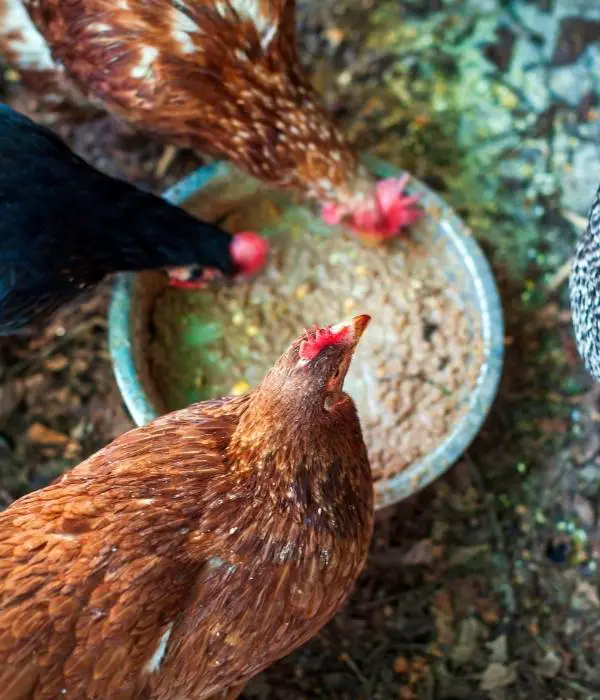
Food scraps can offer nutrition and variety to adult chicken diets. A balanced feeding of food or table scraps to chickens is crucial.
For effective execution, follow these steps:
Start with baby chicks:
Before adding food scraps, newborn chicks need a firm base of store-bought commercial feed.
Starter feed supplies nutrients for growth and development.
After 8-12 weeks, you can gradually add scraps to their food.
Gradual introduction:
Offer tiny amounts of food scraps with their normal diet.
This lets hens adapt to unique tastes and textures without affecting the digestion of their
Watch their reaction and gradually add more food or table scraps to your chickens.
Know what scraps to feed:
Chickens can consume fruits, vegetables, grains, and tiny amounts of meat. In this guide, we include every acceptable and non-acceptable food scrap that you can feed your chickens.
Unacceptable leftovers include avocado, chocolate, citrus fruits, onions, and raw potato skins. Chickens should not eat them since they are harmful.
Combine with commercial chicken feed:
Food scraps can be a good supplement, but they shouldn’t replace their daily feed.
Commercial feed offers appropriate nutrition for chicken health. Give scraps as rewards, not as the primary meal.
Following these instructions to give table scraps to adult hens and newborn chicks for various and healthy diet.
Potential Risks of Feeding Food Scraps to Chickens
Feeding food or table scraps to chickens reduces waste and provides nutrition. However, potential risks must be considered.
Here are five risk factors for feeding table scraps to chickens:
1. Contamination:
Food scraps can carry dangerous infectious agents like Salmonella or E. coli. Chickens that eat polluted waste can transfer these pathogenic organisms to other birds and people.
2. Imbalanced Diet:
Chickens may not always get a balanced diet to harm food scraps, regardless of their nutritional benefits.
Chickens grow on an accurate protein, carbohydrate, vitamin, and mineral combination feed. Overfeeding kitchen scraps might cause nutritional imbalances.
3. Obesity:
High fat and calorie contents in food scraps can lead to obesity in chickens.
Heart illness, joint difficulties, and reduced egg production are more common among overweight chickens.
4. Harmful Foods:
Never feed unsafe foods to chickens. Do not give chickens chocolate, avocado, onions, garlic, or caffeine as they are examples of unsafe foods.
Feeding chickens, these scraps may be toxic to harm them.
5. Crop Impaction:
Chickens store food in a pouch before digestion. Feeding huge or sharp food leftovers can damage their crops.
This may cause pain, loss of appetite, and treatment. This type of issue mostly happens if people give fish or meat without removing the bones.
The main diet of chickens should be a balanced one and no rotten or moldy food.
Can Chicken Eat Meat Scraps?
People argue against feeding chickens meat because of their bird status. They’re incorrect. Chickens are omnivores.
Since chickens love eating meat, why not to give? Meat provides protein and important elements. For egg production and recovering from molting, chickens need protein.
There are no insects in winter, thus feeding meat enhances their feathers and is harmless.
Sometimes treat them with table scrap containing chicken or fish.
Always remember, before feeding your flock, remove any bones or extra fat.
How Much Food Scraps Can Chickens Eat?
Size, age, and activity level affect how much food scraps chickens can eat. Leftover table scraps should not exceed 10% of their feed.
Avoid overfeeding table scraps to chickens because it can cause nutritional imbalances and obesity. Moreover, adjust scraps according to body condition.
Conclusion: Feeding Food and Table Scraps to Chickens
Feeding table scraps to chickens is great to enhance their nutrition supply and taste. This definitive guide will help you to give scrap food safely to your backyard hens.
Always offer safe and healthy food leftovers and avoid risky ones. Begin feeding your chickens scraps gradually and check their consumption once they’re old enough.
Maintain a balanced diet with scraps and commercial feed. Chickens eat food leftovers, which lowers waste, feed costs, and offers various food. It benefits you and your feathery buddies.
